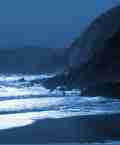 |
Search the site:

 Part 2 About 10,000 years ago, after several false starts, the earth's climate warmed up and today we 'confidently' talk of this as the beginning of the Post-glacial. Archaeologists refer to the hunters who lived in Europe at this time as belonging to the Mesolithic period and it is shortly after its beginning that the earliest evidence of man is found in Ireland. Perhaps the best evidence for the earliest settlers comes from Mount Sandel, Co. Derry, where a Mesolithic encampment was excavated during the 1970s. This site, which lay in fields adjacent to the River Bann just south of the town of Coleraine, has helped revolutionise our understanding of the first post-glacial settlers. The site itself, unfortunately, did not have the advantage of some Scandinavian sites which lie in waterlogged non-acidic deposits, therefore much of the equipment used by Ireland's first inhabitants has disappeared. This campsite lay at the base of the plough soil in an area of acidic subsoils so that little beyond the stone tools, the foundations of the huts and some burnt bones have survived. The most characteristic of the stone tools were deliberately shaped little pieces of flint which were used as barbs, arrow tips and knife edges. They are called microliths. Click here for part 3, or here to go to the start of the article.
From the Appletree Press title: The People of Ireland (currently out of print). |
All Material © 1999-2005 Irelandseye.com and contributors
